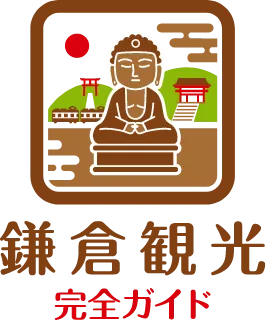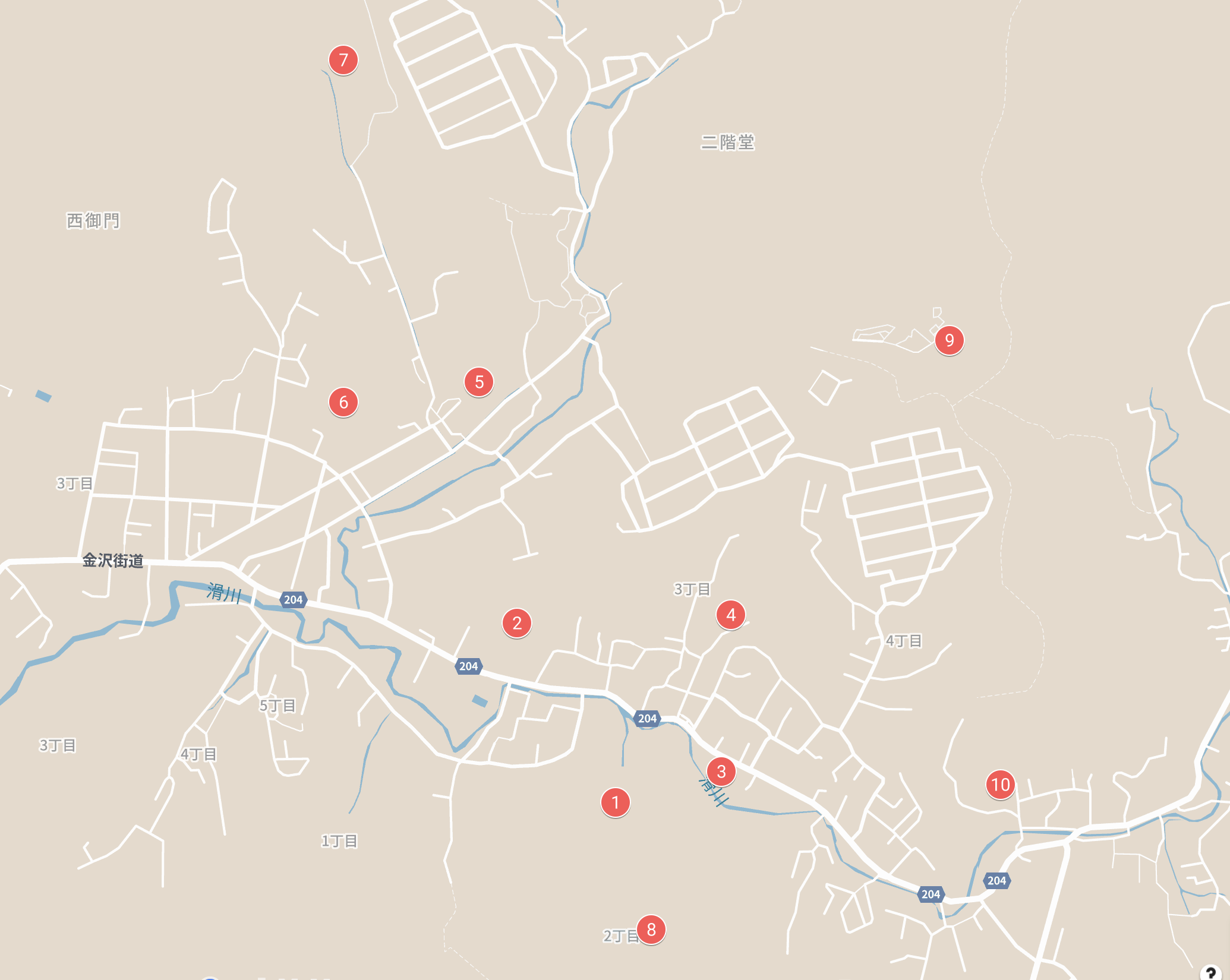AREA
E
AREA
E
金沢街道エリア
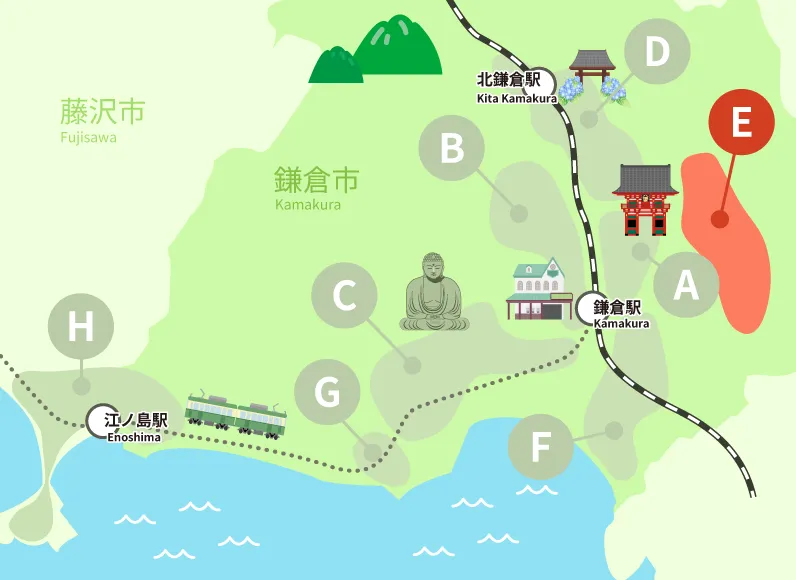
自然と和の精神が息づく金沢街道、 古の街道を辿り、 竹寺の静けさや歴史的な寺院で心を癒す旅。
特徴
金沢街道は、鎌倉と横浜市金沢区を結ぶ、自然と歴史が息づく魅力的な散策路です。この古い街道は、その美しい景観と沿道に点在する歴史ある観光スポットで知られており、歩行者やサイクリストにとっては、鎌倉の豊かな自然を堪能しながら、地元の人々の生活に触れる絶好の機会を提供します。
報国寺(ほうこくじ)は、その幻想的な竹林で知られ、「竹寺」として親しまれています。訪問者は竹林の中で抹茶を楽しむことで、時代を超えた静寂と和の精神を体験できます。杉本寺(すぎもとでら)は、関東霊場巡りの出発点として、心の安らぎを求める人々にとって特別な場所です。一条恵観山荘(いちじょうえかんさんそう)では、枯山水庭園や雅な内装を通じて和の美を体験でき、その施設内のカフェでは鎌倉の自然と和の文化が融合した癒しのひと時を過ごせます。
浄妙寺(じょうみょうじ)や鎌倉宮(かまくらぐう)は、鎌倉の精神的遺産を反映し、訪問者に歴史深い体験を提供します。荏柄天神社(えがらてんじんしゃ)は、学問の神として信仰され、特に受験生に人気があります。覚園寺(かくおんじ)は、病と苦しみの癒しを願う多様な仏教宗派の教えが融合する場所として知られています。
旧華頂宮邸(きゅうかちょうのみやてい)は、昭和初期の洋風建築の美を現代に伝える貴重な資産であり、鎌倉の多様な文化遺産の中で洋風の魅力を加える特別な存在です。金沢街道とその周辺の観光スポットは、鎌倉を訪れる人々にとって、自然の美しさと歴史的背景を深く味わいたい方には欠かせない場所となっています。
観光スポット
-
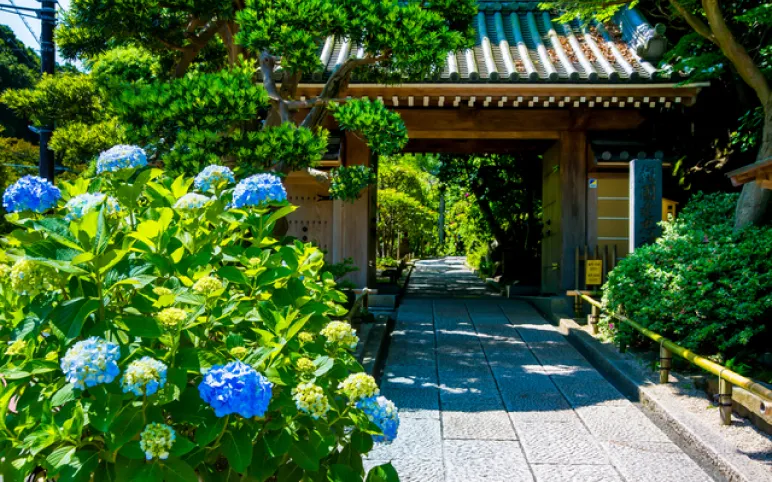
報国寺
竹林の中の静寂と歴史が語る場所
「竹寺」として親しまれる報国寺(ほうこくじ)は、2000本の孟宗竹(もうそうちく)が作り出す幻想的な風景で知られる鎌倉の歴史ある寺院です。14世紀初頭によって建立され、鎌倉幕府滅亡と室町幕府の始まりを象徴する地であり、訪問者は竹林の中で抹茶を楽しみながら、時代を超えた静寂と和の精神を体験できます。
-
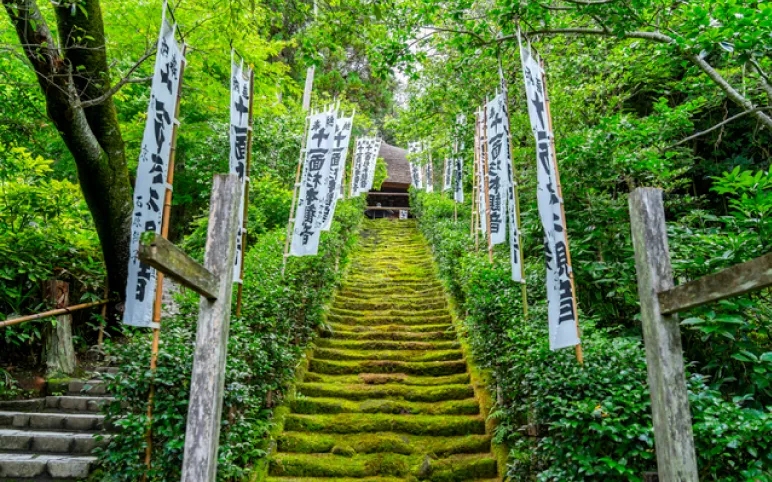
杉本寺
時を超える信仰の旅
苔むす石段が誘う静寂の世界杉本寺(すぎもとでら)、鎌倉の荘厳な自然に囲まれた8世紀創建の歴史ある寺院は、光明皇后(こうみょうこうごう)の夢のお告げにより建てられました。関東霊場巡りの出発点として、苔に覆われた石段や緑の中に佇む白い旗が、心の安らぎを訪れる人々に提供します。特に、十一面の観音菩薩(かんのんぼさつ)の像は国の重要文化財であり、訪れる人々に深い感動と霊的な体験を与えています。
-
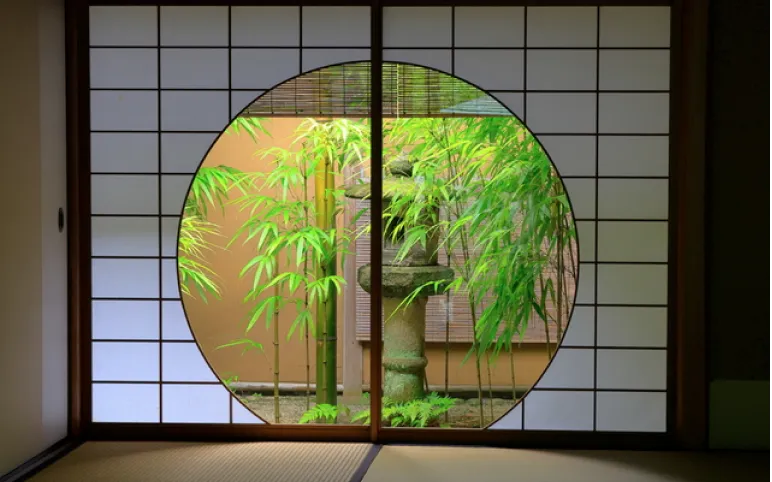
一条恵観山荘
和の心が息づく古の隠れ家
穏やかな時を紡ぐ山荘一条恵観山荘(いちじょうえかんさんそう)、1959年(昭和34年)に鎌倉へ移築されたこの山荘は、江戸時代の茶会で用いられた一条家の歴史ある別邸の一部です。重要文化財にも指定され、枯山水庭園や雅な内装が訪れる人々に和の美を伝えています。特に、恵観が愛した自然を窓越しに感じられる設計や、宮中文化を彷彿とさせる杉戸絵が特徴です。《かふぇ楊梅亭》でのカフェ体験も、鎌倉の自然と和の文化を織り交ぜた癒しのひと時を提供しています。
-
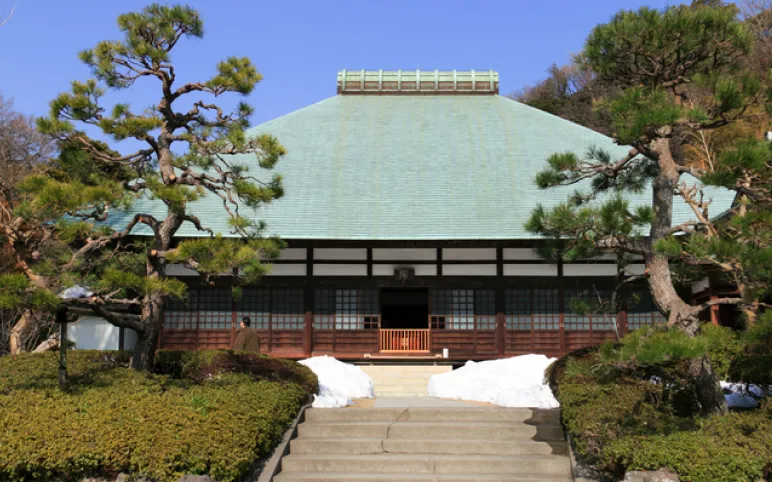
浄妙寺
時空を超える静寂の庭園
鎌倉の精神的遺産を色濃く反映する浄妙寺(じょうみょうじ)は、源頼朝の重臣、足利義兼(あしかが よしかね)により設立されました。この寺院の魅力は、石と砂で表現される枯山水庭園と「喜泉庵」での茶の体験にあり、訪問者に日本の伝統文化の本質を伝えます。さらに、石釜ガーデンテラスでは、古都の自然を背景に洋食を楽しむことができ、古今東西の文化が交差する点が魅力です。
-
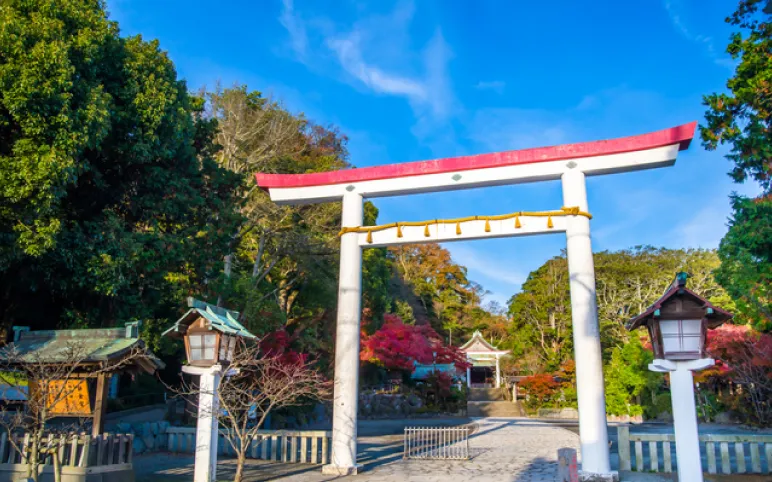
鎌倉宮
歴史を照らす灯火
英雄護良親王を祀る神社明治天皇によって建立された鎌倉宮(かまくらぐう)は、足利尊氏に反抗しながらも28歳で亡くなった護良親王(もりながしんのう)の深い敬愛の念を込めて設立されました。宝物殿や護良親王の土牢、厄除けとされる「撫で身代わり様」の木造像が敷地内に残り、盃割り舎での厄除け儀式や秋の鎌倉薪能()が訪れる人々に歴史深い体験を提供します。
-

荏柄天神社
時代を超えた祈りの場
受験生の聖地荏柄天神社(えがらてんじんしゃ)は、菅原道真(すがわらのみちざね)を祀る、平安時代に創建された鎌倉の古社で、学問の神として知られ、特に受験生に広く信仰されています。源頼朝によって鬼門の守護神として崇敬され、筆供養などの行事で多くの参拝者を集めるこの神社は、900年を超える大銀杏(おおいちょう)や400年を超えるクスノキが訪れる人々を迎え、河童で有名な漫画家・故清水昆(しみずこん)の筆と漫画家154人による河童のレリーフが飾られた絵筆塚が、文化と自然の融合した空間を創り出しています。
-
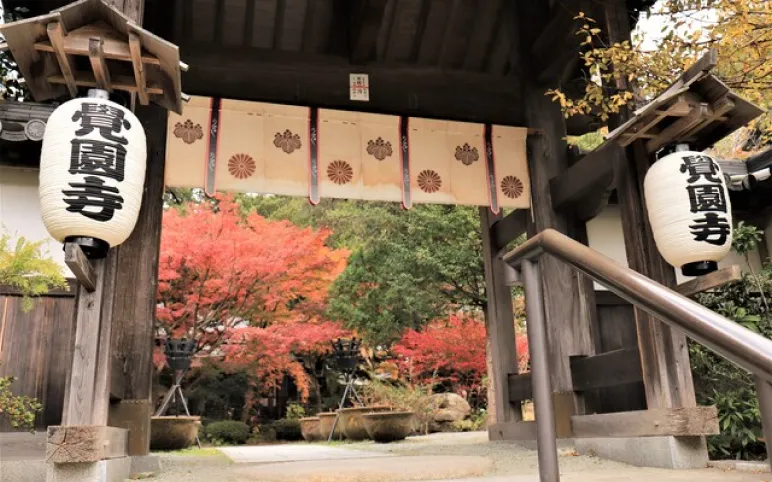
覚園寺
四宗派が交わる聖地
鎌倉の歴史を継承する覚園寺2代執権・北条義時(ほうじょう よしとき)創設の覚園寺(かくおんじ)は、病と苦しみの癒しを願い薬師如来(やくしにょらい)を中心に、多様な仏教宗派の教えが融合する場所です。重要文化財に指定された本尊や守護神の像は鎌倉時代の美術を伝え、境内からは鎌倉の風景を一望できます。「黒地蔵(くろじぞう)」の縁日は毎年8月に開催され、古き良き時代の精神性を現代に伝える貴重な機会となっています。
-
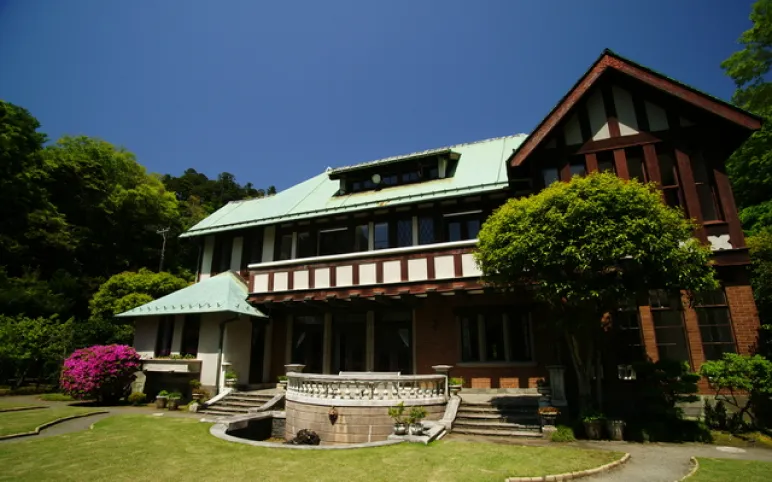
旧華頂宮邸
時を越える洋風の遺産
鎌倉の静謐な美を守る邸宅昭和初期(20世紀初頭)の洋風建築の逸品である旧華頂宮邸(きゅうかちょうのみやてい)は、鎌倉における華頂博信(かちょう ひろのぶ)侯爵の居住地として設計されました。そのハーフティンバースタイルの外観や銅板を用いた屋根など、当時の洋風建築の美を現代に伝える貴重な資産です。庭園はフランス式庭園で、春と秋の建物内の公開時には訪れる人々にその美しさを披露しています。旧華頂宮邸は、鎌倉の多様な文化遺産の中で洋風の魅力を加える特別な存在です。
-

瑞泉寺
禅と自然が織りなす錦屏風の庭
瑞泉寺は、14世紀初頭に夢窓疎石(むそうそせき)によって創建された禅寺で、鎌倉の紅葉ヶ谷(もみじがやつ)に位置します。寺を囲む山々の紅葉は、まるで錦の屏風絵のように美しく、夢窓国師が作庭した岩の庭園は禅の思想と自然美が見事に調和しています。江戸時代には徳川光圀(とくがわ みつくに)が再建し、文化の中心地として栄えました。特に春先の梅の花が咲き乱れる光景は訪れる者を魅了し続けています。
-
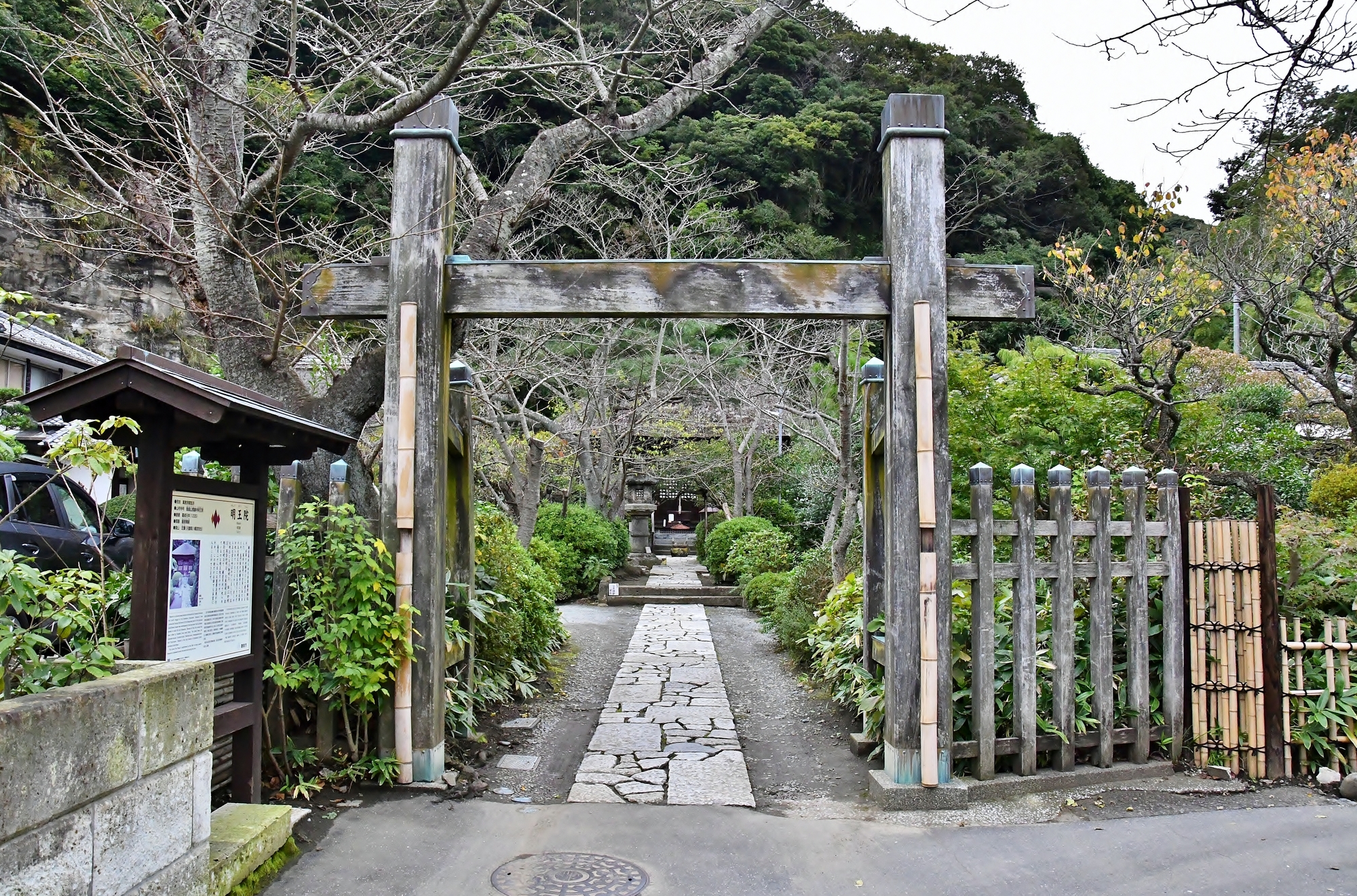
明王院
茅葺き屋根に宿る守護の力、時を超える密教の祈り
鎌倉幕府第4代将軍・藤原頼経(ふじわらのよりつね)が13世紀初期に創建した明王院は、鬼門除けの祈願所として深い宗教的意義を持つ古刹です。中心に不動明王(ふどうみょうおう)を据えた五大明王像が祀られる本堂は、茅葺き屋根の風情ある佇まいとともに、鎌倉時代の美術と信仰を今に伝えています。特に毎月28日の護摩法要では、通常非公開の五大明王像が開扉される貴重な体験が可能。四季の自然と厳かな祈りの空間が調和するこの寺院は、歴史と信仰、芸術が息づく静謐な聖地です。
